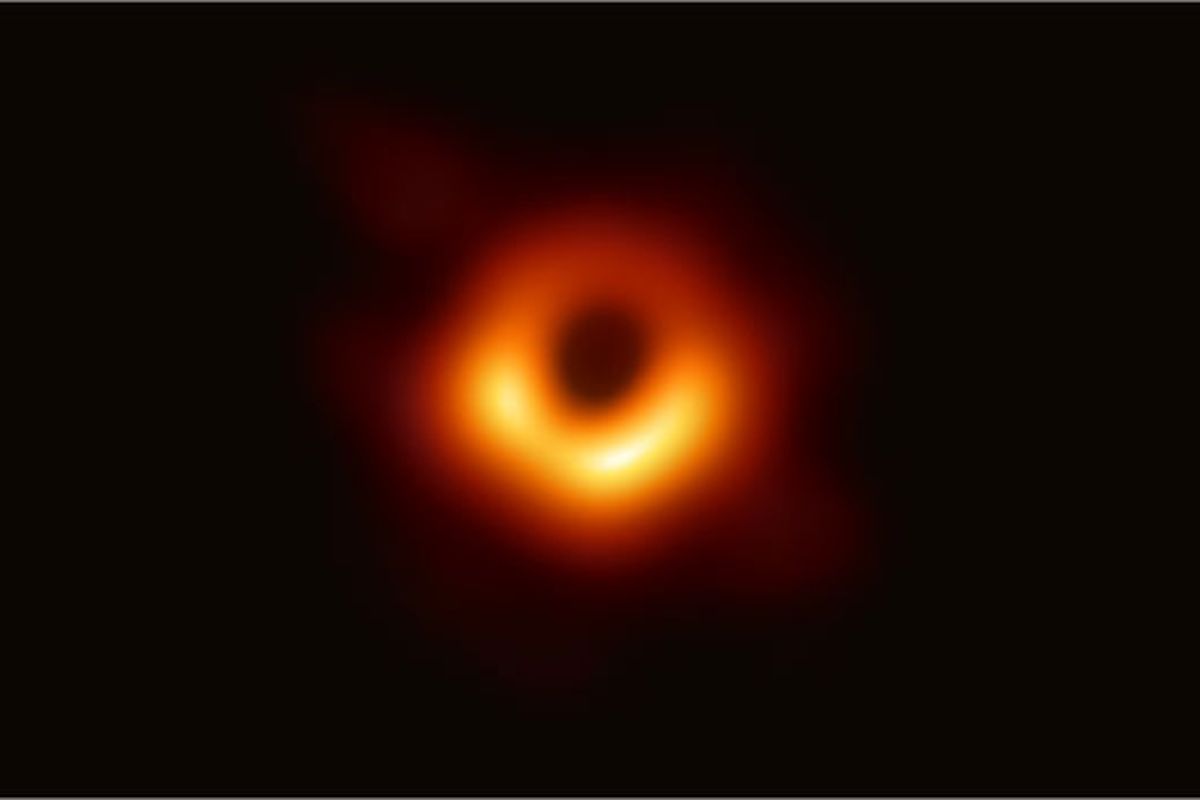In a breakthrough, the first ever direct image of a black hole has been captured, thanks to Event Horizon Telescope (EHT). Situated 55 million light years away from the Earth, the black hole is a real monster—some three million times the size of the earth. This imaging was made into a reality by the EHT project under which eight ground –based radio telescopes were installed across the Earth to capture the image.
The black hole was found in a galaxy called M 87. Professor Heino Falcke of Radboud University of Netherlands, the proposer of the experiment, told BBC—“What we see is larger than the size of our entire Solar System. It has a mass 6.5 billion times that of the Sun. And it is one of the heaviest black holes that we think exists. It is an absolute monster, the heavyweight champion of black holes in the Universe.”
Imaging the black hole also proves Einstein’s General Theory of Relativity to be an unerring assumption in the description of the nature of space and time, once again.
Katie Bouman’s algorithm made the extraordinary accomplishment possible
Processing the images from the EHT required massive computations and this extraordinary task was made easier by Katie Bouman, who developed an algorithm in 2016 to create the image. The algorithm put together all the data collected from the radio telescopes scattered around the globe.
The EHT used the technique of interferometry, which combines the signals from two telescopes so that they interfere with each other. But, an astronomical signal reaches two telescopes at slightly different times that hampered the calculations on which interferometric imaging depends. Moreover, Earth’s atmosphere can also slow down radio waves that exaggerate the time difference.
Bouman intelligently dealt with the problem of time delay where she adopted an algebraic solution. If measurements from three telescopes are considered and multiplied, the extra time delay due to atmospheric noise cancel each other. Bouman’s algorithm—the CHIRP (Continuous High-resolution Image Reconstruction using Patch priors) was developed with this mathematical logic.
Even if the atmospheric noises were filtered, there was still a problem in place. The data obtained from some telescopes scattered around the globe are pretty sparse to have a sensible image of a gigantic black hole. Bouman and her colleague contributed to resolve this aspect as well.
Capturing the impossible
The region of space that we call a black hole is that region whose mass is enormously large and dense that even light cannot escape its gravitational attraction. This made imaging of the black hole a nearly impossible task.
But, Stephen Hawking’s groundbreaking work on black holes shed some light on how to image it. Hawking’s work says that black holes are able to emit huge jets of plasma, and also their enormous gravity pulls streams of matter towards its core. When matter is pulled towards the core of a black hole, it encounters the event horizon—the point at which even light cannot escape, and here the matter forms an orbiting disk. Matters on the disk convert some of its energy to friction. This friction in turn warms up the disk. The closer a matter to the event horizon, the greater the friction is.
Matter closer to the event horizon, in this process, glows bright with the heat of few hundred suns. It is this light that the EHT detected along with the black configuration surrounded by the glowing disk. The data collected by the EHT—some 5,000 terabytes, was really massive that could only be stored on hundreds of hard drives. This data was physically delivered to a super computer, which, with Bouman’s algorithm, corrected the time differences and produced the image.
This black hole imaging has again proved Einstein’s theory of general relativity which, almost a century back, predicted the formation of the black holes. According to Einstein, if a spherical object is squeezed to a sufficiently small sized object, the gravitational pull would be such that nothing would be able to escape, not even light, and this is what a black hole is.
Black holes, as revealed by recent advances in research, are the outcomes of massive supernova explosion of stars which have used all its nuclear fuel. The supernova explosion would result the core of the star collapse into a black hole, which losses all its ability to withstand the enormous gravity.





